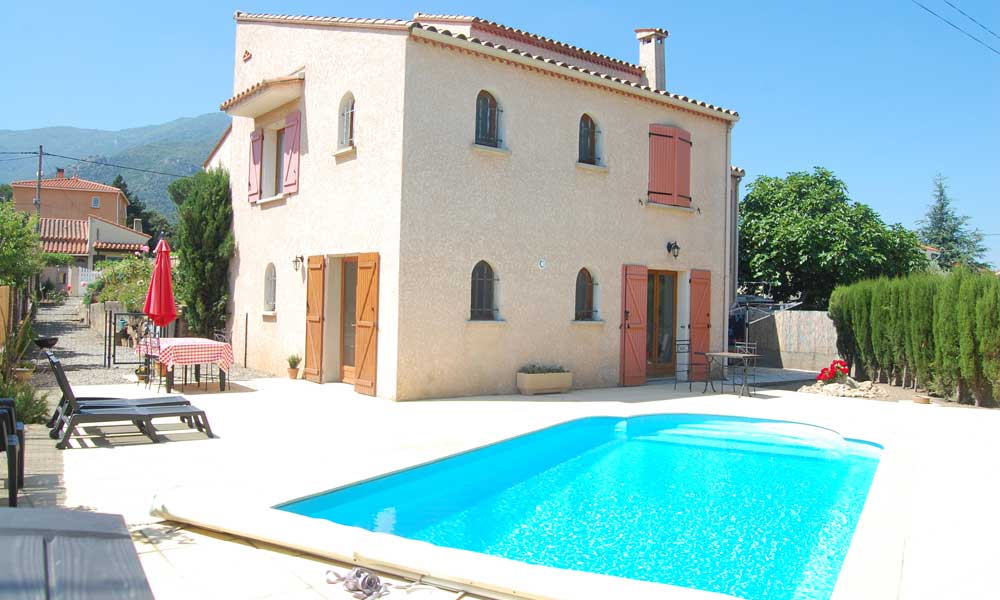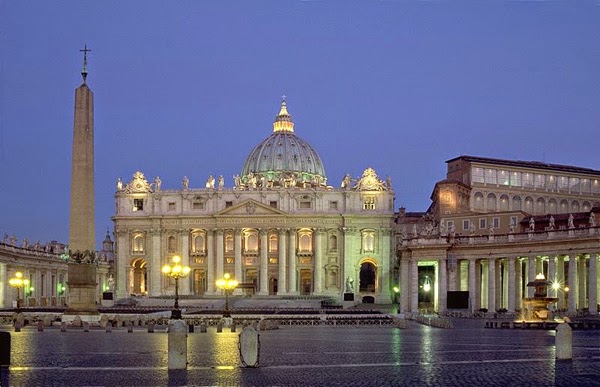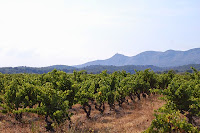What was the Albigensian Crusade?
The Albigensian Crusade, also known as the ‘Cathar Crusade’, was a military campaign initiated by the Roman Catholic Church at the command of Pope Innocent III from a period starting in 1209 and ending in 1255. The objective was to eliminate Catharism throughout the Languedoc region of Occitania. The French crown saw it as an opportunity to bring Occitania back under French control and as such were more than happy to follow the dictate of the Roman Catholic church. The initial stages of the Albigensian Crusade were to be executed under the command of the Papal Legate Arnaud-Amaury, a Cistercian abbot and spiritual advisor who was giving orders on behalf of Pope Innocent III.
So on the 21st July 1209 in the blazing heat of a South of France summer the crusaders arrived at the city of Beziers. Participants in the crusade had entered into an initial contract stating that if they committed 40 days to the crusade all their sins would be forgiven. Effectively passage through the pearly gates for just under a six week commitment; guaranteed by the Pope himself.
Raymond of Toulouse had managed to pacify the Pope using some very skilful ‘issue avoidance’ tactics, which meant that Raymond-Roger of Trencavel was the initial focus of the crusade rather than Toulouse. But Raymond-Roger was convinced that, with only having to stand up to a 40 day engagement, the crusade was bound to fail. All Beziers needed to do was hunker down and resist the assault on the city for those 40 days, after which the crusaders would have no incentive to continue . He was so confident in fact, that he left Beziers to defend itself and withdrew to Carcassonne. Imagine the shock when he received the news that Beziers had fallen the first day and that the entire population had been put to death, an estimated 15 to 20 thousand people, and all in the name of the Roman Catholic church. Suddenly alarm signals went out around the region and several fortifications decided that they would rather not get into the fight.
Now with Raymond-Roger ensconced in Carcassonne, that was clearly the next big target for the crusade, but at least he was armed to the teeth and ready for them, so surely this huge fortification would not fall and certainly not in less than the 40 day milestone?
Unfortunately it was all over in around 6 days (from the 1st to the 7th of August), the city’s water supply was cut and Raymond-Roger was taken prisoner when a so called truce was called and negotiations were meant to be taking place between the crusaders and the resistors. Raymond-Roger was taken prisoner, clearly demonstrating his lack of experience of military proceedings, and Carcassonne surrendered on August 15th.
It was after these initial successes that Simon of Montfort (Simon de Montfort) turned out to be the solution for a feudal law problem. According to feudal law, Raymond-Rogers son should inherit his land and the accompanying 48 fortresses, even though Raymond-Roger had been ex-communicated. The two main benefactors of the crusades i.e. the highest rankers in the feudal system, The Dukes of Burgandy and Nevers, didn’t want to adopt the occupy and keep rule that the Pope had issued. As far as they were concerned they had already earned their way into heaven (40 days service to the crusade) and really didn’t feel they could take the land. Or in fact did they want to, being so distant to their own etsates.
Simon de Montfort on the other hand was well down the feudal scale, so when he was offered the lands he had no such scruples, he took them, the accompanying forty eight castles and the leadership of the Crusade. The Dukes left town to return to their own estates, taking most of the crusaders with them. This left Simon de Monfort in a particularly difficult situation, incarcerated in Carcassonne with a small body of men and only 30 knights he lost forty of his forty-eight castles over the winter period. His fortune started to change with the arrival of his wife Alix and some re-enforcements during the spring with more crusaders arriving in the summer. It was then that Simon made an attack on Bram, which fell in only three days. He elicited his revenge on a priest he felt had double crossed him and went on to mutilate one hundred prisoners in the same manner that two of his men had been mutilated in the previous autumn. Reference French History Books. This was to mark the beginning of the Simon de Monfort period of the crusade and was a particularly gruesome act that was only to be surpassed at the next major obstacle, Minerve, the capital of the Minervoise.
References also owed to Wikipedia for information and images
Why Did the Roman Catholic Church Have Such a Problem with Catharism?
Pope Innocent III Instigated the Cathar Crusade
The Catholic church considered the adoption of the Cathar faith to be an act of heresy. The Cathars did not believe in a single all encompassing god, they considered that there were in fact two gods, equal in status. They believed the physical world in which we all live was evil and had been created by the ‘King of the World’. The ‘Rex Mundi’, to give it its Latin interpretation, encompassed everything that was of physical form or substance in a chaotic world of power driven individuals.
The second god was in principle completely removed from the material world and of pure spirit. This was the god that the Cathars worshipped, because this god was completely unsullied by the material world and was the god of order, love and peace.
So what did this mean in practice? Basically that the Cathars could have a very nice time in the physical world because civil authority, being of the material world, had no claim over them. Truly devoted Cathars would take the ‘consolamentum’ to become a perfect. Not quite so easy for women because procreation was considered evil, so unless a woman had remained single and not had children, she could not in theory take the ‘consolamentum’. That is of course unless you were an ‘A’ lister like Esclarmonde of Foix who received the ‘consolamentum’ in 1204 at an event held in Fanjeaux. She was a widow and would no doubt have had sex in the process of procreation, she did have eight children after all. But she was the daughter of a Count which presumably meant she didn’t have to adhere to the normal rules.
Becoming a ‘perfect’ meant that you were seeking spiritual enlightenment and that you were no longer concerned with the physical aspects of the material world and would abstain from eating meat or animal based products, avoid sexual contact and live a life of severe austerity.
Cathars believed in a process of reincarnation and that the soul was doomed to incarnate into this materialistic world time and again until through a process of spiritual enlightenment and purification it was able to return to God through Christ and the Holy Spirit. It was also thought that this process of death and rebirth towards final Perfection took place over seven lives.
In truth not many Cathars became perfects and the rank and file of the Cathar followers did not have to lead such a severe life of austerity and abstinence, they were viewed as ‘credente’ (ordinary believers). The Cathar sick or injured could be given the ‘consolamentum’ by a perfect and if they subsequenty died there was little opportunity to fall back into sin. So they entered and benefited from the status of becoming an ‘Elect’ which placed them on a par with the angels or holy spirits and allowed them to pass from the material world to the spiritual world.
If they lived on the other hand, they then had to adopt the rules and practices of the ‘perfects’ and go through the three years of preparation required to take the consolamentum’. A pretty tough option for anyone not really prepared to make the sacrifices needed to become an ‘Elect’ the objective of Cathars who became perfects.
A cynic might say that you could do whatever you wanted to do in the material world but then as long as you took the ‘consolamentum’ just prior to passing you could become an ‘Elect’ and instead of being re-incarnated back to the physical world you would be purified and pass to the spiritual world of the good god.
Unfortunately for the Cathars there were plenty of cynics observing that were prepared to pick up on every little inconsistency and when one of those was Pope Innocent III. Someone that had a serious issue with Catharism, a faith with spokesmen that had a habit of pointing out one or two of the Roman Catholic indiscretions such as the storming of ‘Christian Constantinople’ with fire, sword, rape and pillage for example.
The Cathars also had a leaning towards rubbishing the holy act of ‘baptism by water’ as being tainted by a component of the material world and highlighting the excesses of people in high places that adhered to the Roman Catholic faith.
You can see then, that the writing was on the wall as they say, especially when a few political considerations are taken into account and some greedy people in high places stood to benefit from the removal of the Cathars.
Albigensian Crusade Timeline
Starting in 1209 and Finishing Finally in 1255
1210 saw the crusade, now firmly under the leadership of Simon of Monfort, move onto Minerve. Exactly a year and a day after the slaughter at Beziers, Minerve surrendered to the crusaders. They had held out a lot longer than their counterparts at Beziers and Bram, but with the city’s well destroyed they finally succumbed to the crusaders. Given the opportunity to renounce their faith, most did, but there were 140 that refused and for their trouble they were burned at the stake. This was in a location thought to be below the town somewhere in the Gorge de Cesse.
This was to set the trend for the next 5 years and with many towns and cities yielding without a fight, the crusaders had the initiative and the upper hand. Raymond of Toulouse had fled to England, but in 1216 things began to change in the Lauragais.
The Return of Raymond
Raymond returned in April of 1216 and raised a substantial force to take on Montfort , first he captured Beaucaire and managed to fight off de Montfort, there were a number of skirmishes in the region and then just after a year since his return, in September 1217, while Montfort was occupied in the Foix region, Raymond re-took Toulouse.
This was to be the turning point for Simon De Montfort, a year later whilst Toulouse was under siege by De Montfort he was struck by a rock, it was said that the rock ‘struck on his steel helmet, smashing into pieces his eyes, brain, teeth, and forehead; the count fell to the ground bloody and black’. The whisper went out that the ‘Wolf was dead’. It was the end of the part Simon de Montfort would play in the Albigensian Crusade.
With the death of Innocent III, King Peter and now Simon De Montfort the only surviving proponent of the Crusade was King Philip of France, so once more the Crusade lost momentum. Amaury de Montfort, Simon’s son abandoned Carcassonne and the son of Raymond-Roger de Trencavel returned from exile to reclaim the area. So Montfort offered his claim to the lands of Languedoc to Louis VIII, who accepted, now there was royal intervention and a new emphasis that was strong enough to ensure the continuation of the Crusade to its bitter end.
Even the death of Louis VIII did not prevent this happening. The Inquisition was established in Toulouse in November 1229, and the surviving elements of Catharism were eliminated from the region, largely thanks to the famous inquisitor Bernard Gui. Cathar strongholds fell one at a time. Montségur managed to withstand a nine-month siege before finally being taken in March 1244.
Many saw this as the end of the Albigensian Crusade but it managed to drag on for another eleven years. The final hold-out was a small, isolated, overlooked fort at Quéribus, which quickly fell in August 1255 to end the mopping up of the Cathars and marking the end of Catharism.
The burning of the Cathars that refused to give up their faith had become the norm, as grizzly a death as it was, and even as late as 1321 a Cathar that admitted his faith was burned as a result.
So was that the end of the Cathar faith? Very nearly but even to this day there is still a tiny group that exist at a location close to Rennes Le Chateau. Arques is where you will find that there are still a few Cathars and there is also an exhibition in the town centre about the Cathar history in the Roche house.
The History of France in the South
The Part the Lauragais and Languedoc Played in the Making of France
The Lauragais is one of the lesser known, but very beautiful, regions of France with some very important landmarks that should be considered part of the heritage there. You will find Toulouse, Carcassonne and the capital Castelnaudary all listed as being part of the Lauragais or as immediate neighbours. A lovely place to visit and to explore some French history.
You can find out a little more about the Cathar Fortresses and where they are here.
If reading this article on the Albigensian Crusade and how the Cathars were persecuted at the instigation of the Roman Catholic faith has peaked your interest in the history of the Lauragais region.
Then you can purchase this book written by a local historian on the history of the Lauragais and the part it played in forming France as we know today.
It is on Amazon and available world wide, but for those of you based in the UK here is the link:
http://www.amazon.co.uk/gp/product/B007Z55F3U











